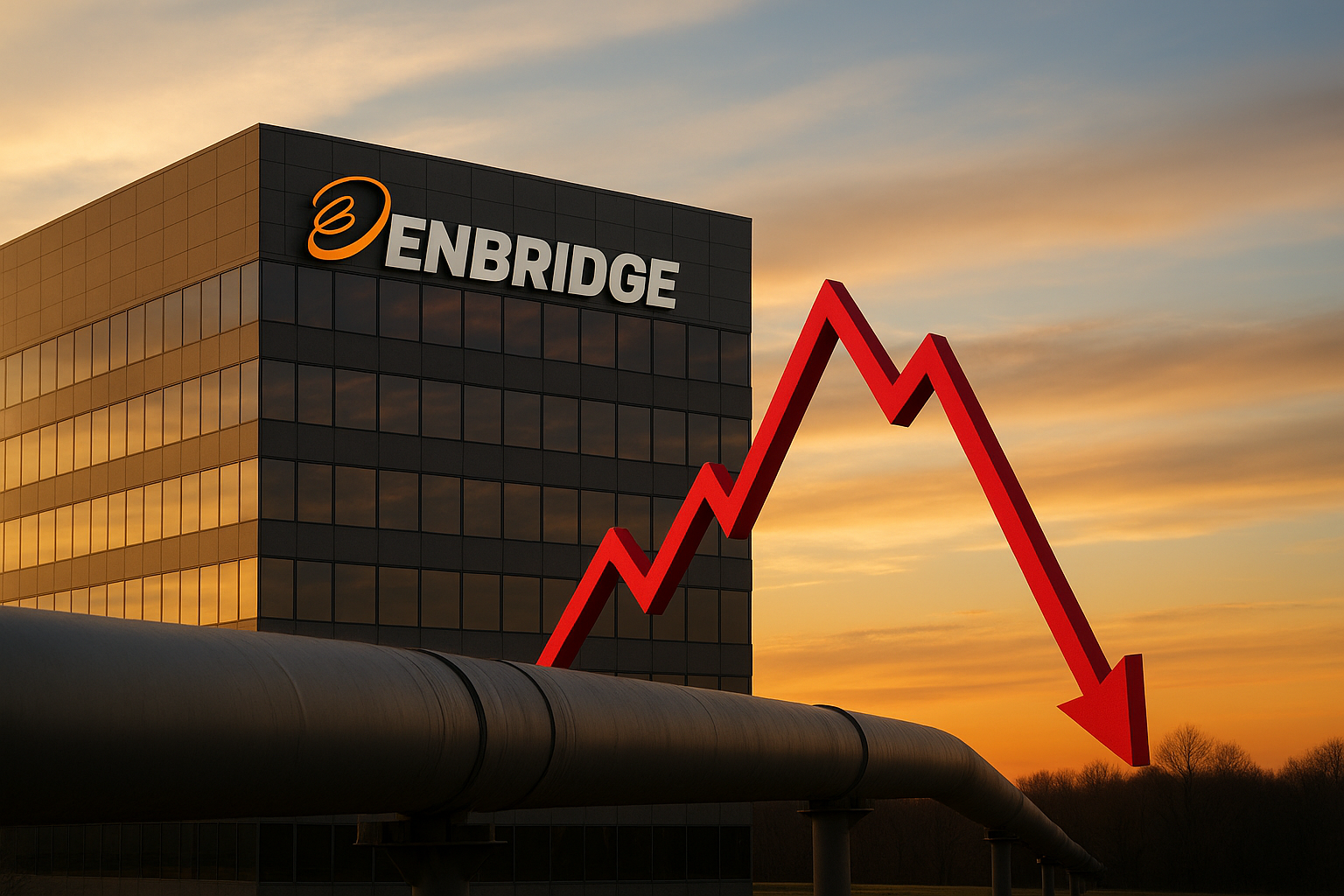The momentum behind North America’s resource infrastructure is accelerating again, and the latest signal comes from Canada’s Enbridge Inc. The company has approved a US$1.4 billion expansion of its Mainline and Flanagan South pipeline systems, a move that will add a combined 250,000 barrels per day of additional capacity for heavy Canadian crude heading into key U.S. refining markets. According to Reuters, the project includes a 150 kbpd Mainline increment and a 100 kbpd boost along the Flanagan South route—signaling renewed confidence in long-term demand for heavy crude in the U.S. Midwest and Gulf Coast.
For investors, this development stands out not merely as a pipeline investment but as a broader indicator of sustained economic commitment to North American energy flows—a dynamic that often ripples into mining, services, and upstream activity.
A Major Vote of Confidence in North American Energy
Enbridge’s decision comes at a time when energy markets remain caught between strong structural demand for crude and an increasingly complex regulatory and ESG environment. Despite the shift toward renewables and low-carbon agendas, U.S. refineries—particularly in the Gulf Coast—still rely heavily on Canadian heavy crude blends (notably Western Canadian Select) to maximize processing efficiency.
The additional 250 kbpd of capacity is meaningful. According to Bloomberg’s refinery utilization data, U.S. Gulf Coast and Midwest refineries have been operating near or above 90% capacity for much of the year, strengthening the incentive for midstream expansions that ease logistical bottlenecks.
Enbridge’s pipelines move the lion’s share of Canadian crude exports, making the Mainline system a critical conduit for cross-border energy reliability. The expansion signals confidence not just in today’s demand but in the multi-year profitability of the Canada–U.S. integrated energy corridor.
What the Expansion Means for Energy and Mining Markets
1. Upstream Activity Could Reaccelerate
Pipeline bottlenecks have historically constrained production growth in Alberta’s oil sands region. By enhancing flow capacity, Enbridge is lowering logistical constraints that have often forced producers to accept wider price discounts for Canadian heavy crude.
A more efficient export path could encourage:
- Increased capital spending from Canadian oil producers
- Higher utilization of existing reservoirs
- More activity among oilfield service firms
- Potential upstream growth over a multi-year period
While oil sands are not metals or mining assets, they create substantial demand for equipment, labour, and supporting industrial inputs—often provided by mining-adjacent service firms.
2. Infrastructure and Midstream Investors May Benefit
Midstream companies like Enbridge typically generate stable, regulated or contract-backed cash flows. Expansions of this scale often lead to higher throughput, improved returns on invested capital, and stronger long-term dividend sustainability.
Investors in energy infrastructure funds and pipeline operators may see the approval as a sign that the regulatory and economic climate still supports major cross-border projects—despite political uncertainty.
3. Mining Sector Implications
While not immediately obvious, this pipeline decision intersects with the mining sector in two ways:
- Energy-intensive mining operations benefit from more stable heavy crude supply chains, particularly operations tied to bitumen upgrading, steelmaking, or heavy industrial processes.
- The build-out of large-scale infrastructure tends to stimulate demand for steel, industrial metals, and construction inputs, indirectly supporting upstream miners of iron ore, metallurgical coal, and industrial metals.
Resource infrastructure is deeply interconnected across the Canadian and U.S. economies, making this project a positive signal for multiple supply-chain segments.
Why This Matters for Investors
Several key forces make this development important for market participants:
- Energy security remains a priority for the U.S., and Canada remains the country’s largest oil supplier.
- Heavy crude demand is structurally strong given U.S. refining configurations.
- Infrastructure durability means pipeline assets often generate decades of cash flow.
- Regulatory clarity—while not perfect—showed enough stability for Enbridge to greenlight a project of this scale.
For mining and metals investors, the takeaway is that North American resource investment remains robust, even in a transitional energy environment. The pipeline expansion could support activity across multiple industrial ecosystems.
Future Trends to Watch
1. Policy and Permitting Dynamics
Pipeline projects face increasing scrutiny from environmental groups and regulators. Investors should monitor Canadian federal permitting conditions, cross-border approvals, and any challenges similar to those seen in the Line 3 and Keystone XL cases.
2. U.S. Refinery Demand Patterns
Gulf Coast refiners continue to show strong margins for processing heavy crude. Watch for throughput trends, maintenance cycles, and any shifts in crude slate preferences.
3. ESG and Carbon-Intensity Debates
Oil sands remain a target of ESG-focused investors. Pipeline expansions could intensify debates around carbon intensity, potentially impacting institutional ownership patterns.
Key Investment Insight
This expansion underscores a broader point: North America’s resource and industrial economy is not slowing down, despite political pressure and decarbonization narratives. For investors, that means opportunities across:
- Energy infrastructure
- Mining services
- Industrial metals
- Engineering and construction firms
- Equipment and pipeline component suppliers
But caution is warranted. Investors must weigh regulatory risks, ESG challenges, and commodity price volatility against the long-term stability of cross-border energy flows.
Stay tuned with MoneyNews.Today for daily coverage that connects headline market developments to long-term investment implications across energy, mining, and infrastructure sectors.





